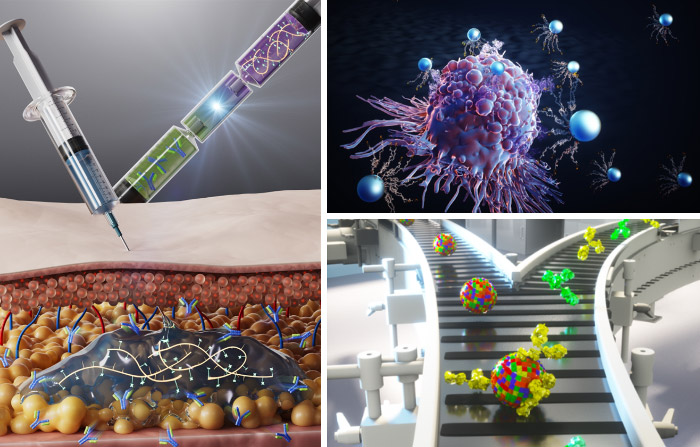Nanomedicine laboratory - Presentation
This team belongs to the UMR 1030 Molecular Radiotherapy and Novel Therapeutics
Our team develops new ways to diagnose and treat cancer using tiny, smart particles called nanomedicines. By combining advanced imaging and targeted therapies, we aim to detect tumors earlier and make treatments more effective and safer. Our ultimate goal is to bring these innovations quickly from the lab to the clinic, so they can directly benefit patients.
Current research
The laboratory conducts cutting-edge translational research at the intersection of nanotechnology, cancer therapy, and molecular imaging. The team’s overarching aim is to design and validate innovative therapeutic and diagnostic strategies that can be effectively translated to clinical oncology.
One major research theme focuses on the development of novel therapies, including smart drug delivery systems that integrate nanomedicine with immunotherapy. These include immunonanotherapies, engineered antibody-drug conjugates and their respective novel delivery methods, and next-generation small molecule therapeutics, all designed to improve the specificity, efficacy, and safety of cancer treatments, particularly in diseases such as multiple myeloma and breast cancer.
In the meantime, the lab’s work also involves the creation of advanced diagnostic agents. By harnessing the capabilities of nanotechnology, the team is developing targeted imaging tools such as immunoPET, immunonanoPET, and immunonanoMRI agents. These novel platforms aim to improve early cancer detection, monitor treatment response, and guide precision medicine.
Finally, the lab places strong emphasis on clinical translation. Through close collaboration with clinicians, the team validates its nanotherapeutics in relevant disease models and carries out early-phase clinical trials, including the development of biosimilars and monoclonal antibodies for solid and hematologic malignancies. This translational pipeline ensures that innovative research findings can directly impact patient outcomes.
To further accelerate the delivery of these innovations to patients, the team also fosters entrepreneurship by launching biotech startups—such as TherO2 and Recobia Therapeutics—as spin-offs to bridge the gap between academic research and clinical application.

